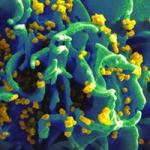
John Spouge, M.D., Ph.D.
Senior Investigator
Statistical Computational Biology Group
NLM/NCBI
Research Topics
After experience elsewhere in the classical modeling of physical, chemical, and biological systems, particularly HIV infectivity assays, Dr. Spouge's research at NCBI has focused on sequence alignment and sequence structure statistics, with particular application to BLAST statistics and the detection of transcription binding factor motifs. Recently, he has contributed to the international effort to identify species with DNA barcodes, a field with applications to the conservation of species, the control of poaching, the protection against pests at customs, and the detection of consumer fraud by species substitution. Dr. Spouge's special interest is formulating and solving difficult mathematical problems that have important biological applications.
Biography
Dr. Spouge graduated from the University of British Columbia with a B.Sc. in Mathematics and an M.D., before obtaining a D. Phil. in Mathematics under John Hammersley at the University of Oxford. After a two-year post-doctoral fellowship at Los Alamos National Laboratory in T-10, the Theoretical Biology group, he came to the National Cancer Institute in 1985, and from there, to the National Center for Biotechnology Information (NCBI) in 1989.
Selected Publications
- Stanke Z, Spouge JL. Estimating age-stratified transmission and reproduction numbers during the early exponential phase of an epidemic: A case study with COVID-19 data. Epidemics. 2023;44:100714.
- Frith MC, Shaw J, Spouge JL. How to optimally sample a sequence for rapid analysis. Bioinformatics. 2023;39(2).
- Gauran IIM, Park J, Lim J, Park D, Zylstra J, Peterson T, Kann M, Spouge JL. Empirical null estimation using zero-inflated discrete mixture distributions and its application to protein domain data. Biometrics. 2018;74(2):458-471.
- Silva JC, Egan A, Arze C, Spouge JL, Harris DG. A new method for estimating species age supports the coexistence of malaria parasites and their Mammalian hosts. Mol Biol Evol. 2015;32(5):1354-64.
Related Scientific Focus Areas
This page was last updated on Monday, August 28, 2023


